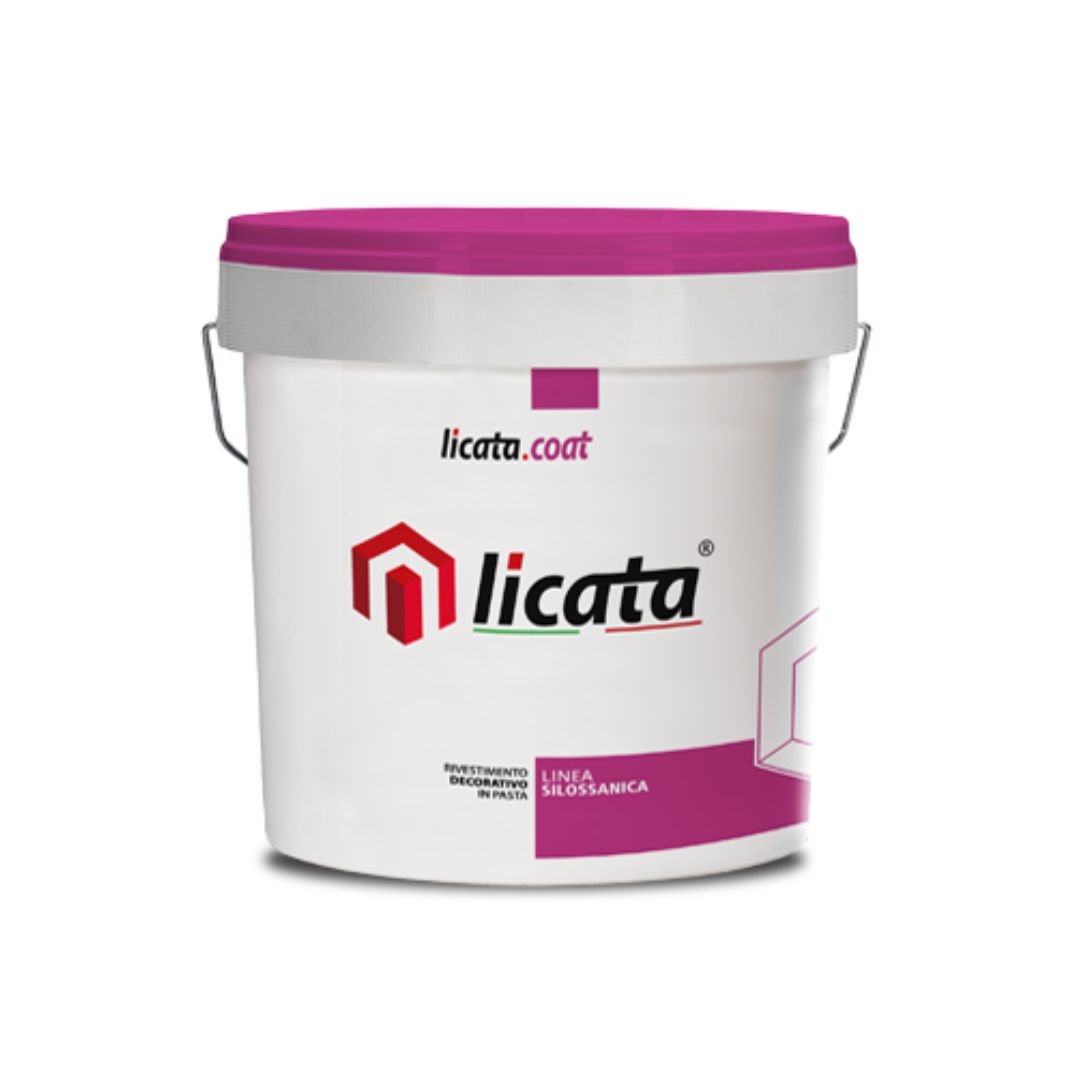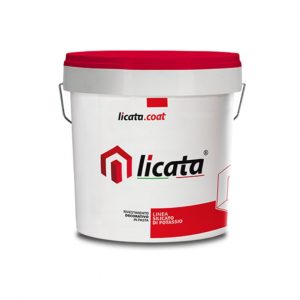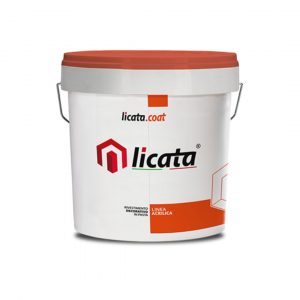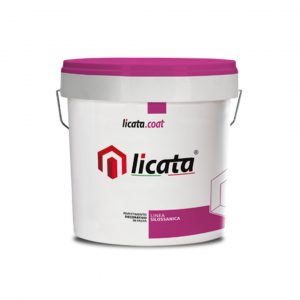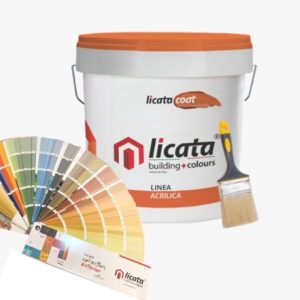People use silicone paint in London because of its impressive resistance to water, its ability to adhere to various substrates, its resistance to mould, fungi and algae, and the fact that it can be used for internal or external applications.
Licata silicone paints are highly breathable as well as being adaptable to alkaline substrates and demonstrate formidable resistance to fungi, moulds and algae. Other key features of this product include:
- Repels dirt, dust and atmospheric pollutants
- Demonstrates outstanding vapour permeability
- Provides dependable protection against mould and algae
- Can be used for interior or exterior applications
- Can be used on old or new structures
One of the defining characteristics of Licata NanoSil Silicone Paint is its versatility. As we alluded to earlier it can be applied to a variety of substrates in both indoor and outdoor environments. That includes cementitious substrates that have had at least 4 weeks of curing time, tunnels, underpasses and other concrete structures.
Silicone improves the paint’s hydrophobic qualities, adherence and its resistance to extreme conditions. From an aesthetic standpoint, silicone helps disperse pigments which enhances colour. It also helps to eliminate surface defects and increase the paint’s resistance to high-temperature environments.
![]() Low dirt pick-up
Low dirt pick-up
![]() Excellent water vapour permeability
Excellent water vapour permeability
![]() High water repellency
High water repellency
![]() Versatility
Versatility
![]() Protection against mould and algae
Protection against mould and algae
The case for decorative silicone paint
Advances in exterior coating technology in recent years have created a level of expectation in consumers when it comes to exterior paint that wasn’t necessarily there 20 or 30 years ago.
Today, home and business owners expect their non-alkyd exterior paints to exhibit robust durability and outstanding weather resistance. In addition, they want their house paint to provide UV protection and, in most cases, to last at least 20 years.
That’s a lot to ask of a house paint, but Licata GrueSiloxan decorative silicone paint is up to the task.
Description
What makes Licata GrueSiloxan decorative silicone paint such a popular choice
Our exterior silicone paint is highly dirt-resistant and self-cleaning. That doesn’t mean it periodically wipes itself down, instead, it repels dirt, dust and other airborne pollutants rather than attract them the way alkyds can.
The secret to the dirt repellency qualities of our silicone paint is the silicone itself. It reduces moisture content on the surface, which in turn increases the paint’s ability to repel airborne particles. Many types of airborne pollution contain chemicals that can undermine the integrity of normal paint if allowed to take hold. The ability to repel these airborne particles and keep those destructive chemicals at bay helps explain our paint’s commendable durability.
Other benefits
Another of the outstanding benefits of silicone paint is that it can often be applied without having to remove much, or even any, of the old coating. While this is not the preferred method of applying this type of paint, it is nonetheless emblematic of how versatile and adaptable it is when compared to other types of exterior house paint.
Silicone paint is also renowned for its ability to take to a variety of surfaces including wood, metal, concrete and stone. Once applied it is very tough and does an outstanding job masking small cracks, and various imperfections on a surface. It also pays no heed to sudden or extreme temperature changes.
If you are looking for an exterior house paint that will repel dirt, require minimal surface prep, discourage algae and mould, cover cracks and last for many years, decorative silicone paint from Licata should be on your list.
Licata NanoSil Paint
NanoSil paint is indicated for the decoration of substrates in internal and external environments, on new or existing residential, industrial or commercial buildings | It is recommended for use on cured substrates, i.e. after a curing time of at least four weeks | It is applicable on substrates such as: cementitious-based residential finishing | already painted surfaces, after careful checking and cleaning of the substrate | tunnels | underpasses | concrete.
Characteristics of Silicone Paint
- Self-cleaning – NanoSil Paint from Licata is formulated with special nanometric pigments that provide it with self-cleaning and photocatalytic properties. These enable it to oxidize airborne pollutants that come to rest on the surface.
- Anti-mould capabilities – Some of the same properties that drive photocatalytic self-cleaning are also responsible for preventing mould and algae from gaining a foothold on the painted surface. A major positive from both aesthetic and health perspectives.
- Breathability – We have already alluded to the breathability of our silicone paint. That breathability is due to the paint being formulated using mineral binders. As such it does not create a film. Instead, it is microporous and highly breathable.
Licata: Your Go-To Source for Silicone Paints
Licata is a recognised leader in the formulation and distribution of leading-edge silicone paint in London. Stop by one of our 3 London area supply depots and showrooms to learn more about whether silicone paint is right for your project.
Silicone Paint FAQs
Why should I use silicone paint from Licata?
Because Great Britain is an island the air is almost always heavy with moisture, it rains every other day, brisk winds are a fact of life, and temperatures can rise and fall in a few minutes. Homes and businesses need to be properly sealed against the onslaught or they will experience myriad types of damage that will undermine their value and long-term viability. Silicone paint provides that proper seal.
Is silicone paint breathable?
Yes, silicone paint provides a high degree of breathability that enables moisture to pass through and be vented to the atmosphere. This prevents moisture from building up inside the walls, rotting wood, fostering the growth of mould and undermining insulation.
Will silicone paint make my house waterproof?
It will prevent water from passing through the painted areas, but it obviously cannot seal a leaky foundation, stop floodwater from coming in under the doors, correct loose-fitting window panes or prevent unpainted parts of the exterior from allowing water to pass through.
How long will a silicone paint job last?
Silicone paint was an immediate hit the moment it landed on store shelves. It has been used on literally millions of buildings since it was introduced which has produced plenty of evidence regarding its longevity. In most cases, you can expect silicone paint to last 20 years. In some cases considerably longer.
Can I apply silicone paint to areas that have sustained salt damage?
You should not apply silicone paint (or any other type of paint) to an area with salt damage until said damage has been repaired. That will entail removing the salt-damaged substrate, applying new plaster and then applying a silicone primer once the plaster has dried.
Can silicone paint be painted over?
It depends on the type of paint you want to paint over with. Paints with a wetting agent, such as resin-emulsion paints, should work fine. Other types of paint will not.
Why not use less expensive paint?
Because cost is relative. Yes, silicone paint may cost you more in the here and now, but over time it will actually be a much better value due to its strength, flexibility, self-cleaning character and longevity.
Additional Info
| Colours | Licata System Colours |
|---|---|
| Consumption | 0.250 – 0.350 kg/m² |
| Weight | 25 KG |

